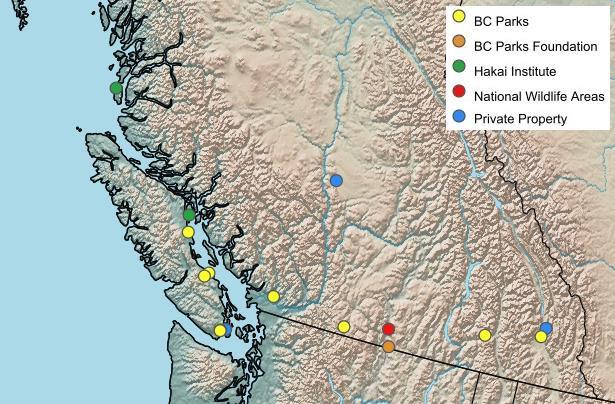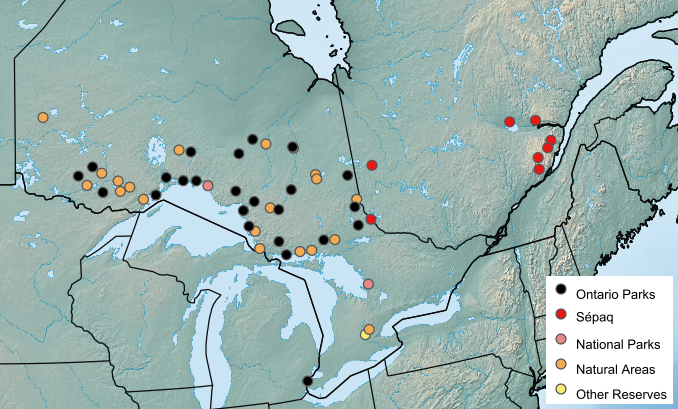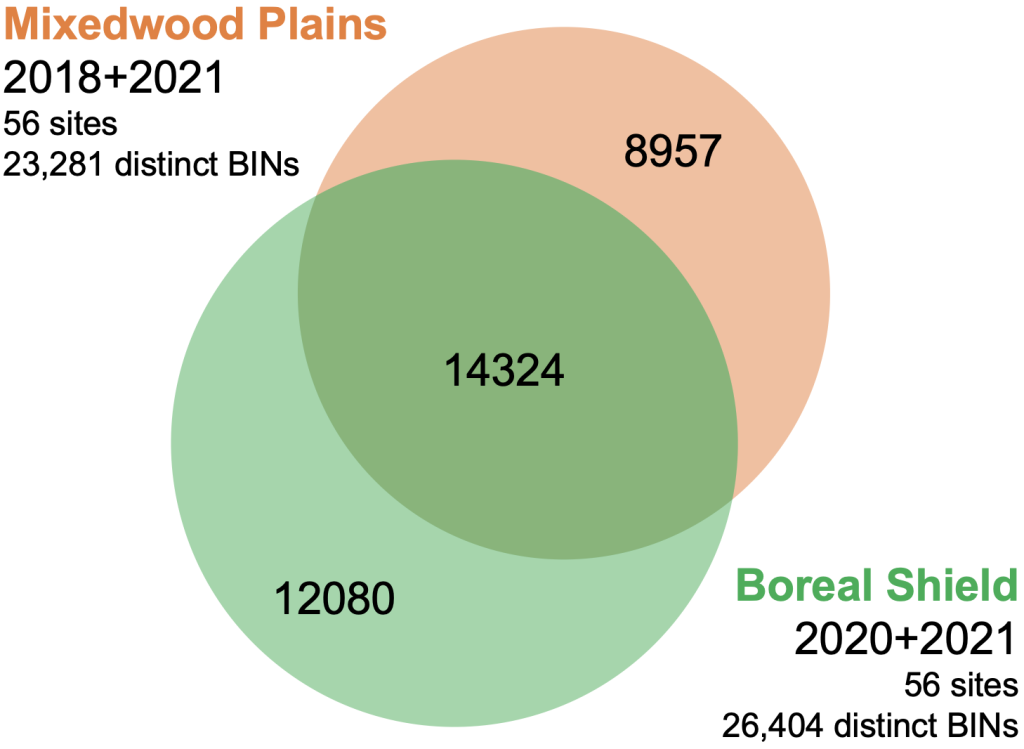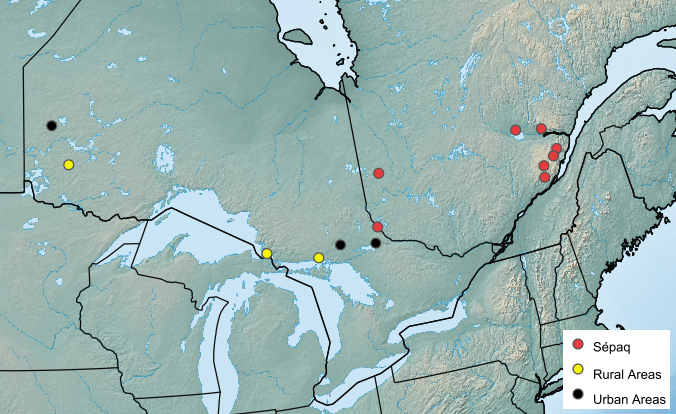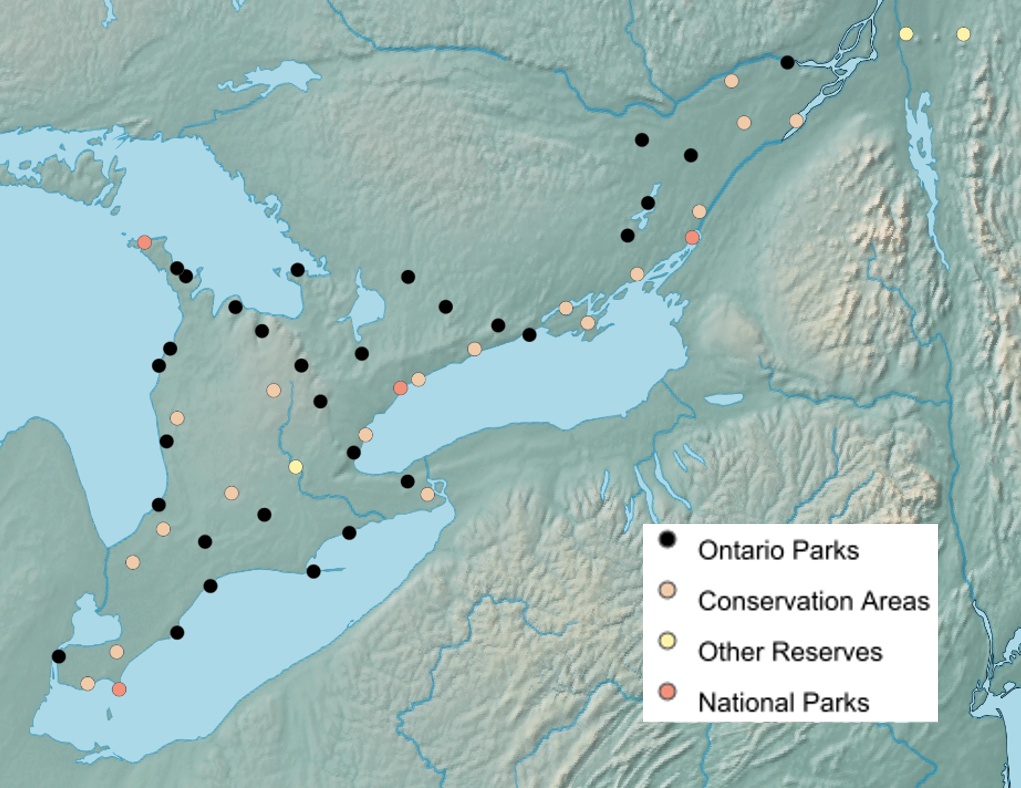Overview
This project is aimed at examining long-term trends in arthropod communities by gathering data at sites that are likely to persist, such as national and provincial protected areas. Five different Canadian ecozones were targetted: Mixedwood Plains (2018, 2021), Boreal Shield (2020, 2021), Prairies (2022), Pacific Maritime (2023), and Montane Cordillera (2023). The TRACE project has sampled a grand total of 174 sites from 2018-2023 ranging from Provincial Parks, Conservation Areas, and National Parks to miscellaneous farm, natural, and urban sites.

